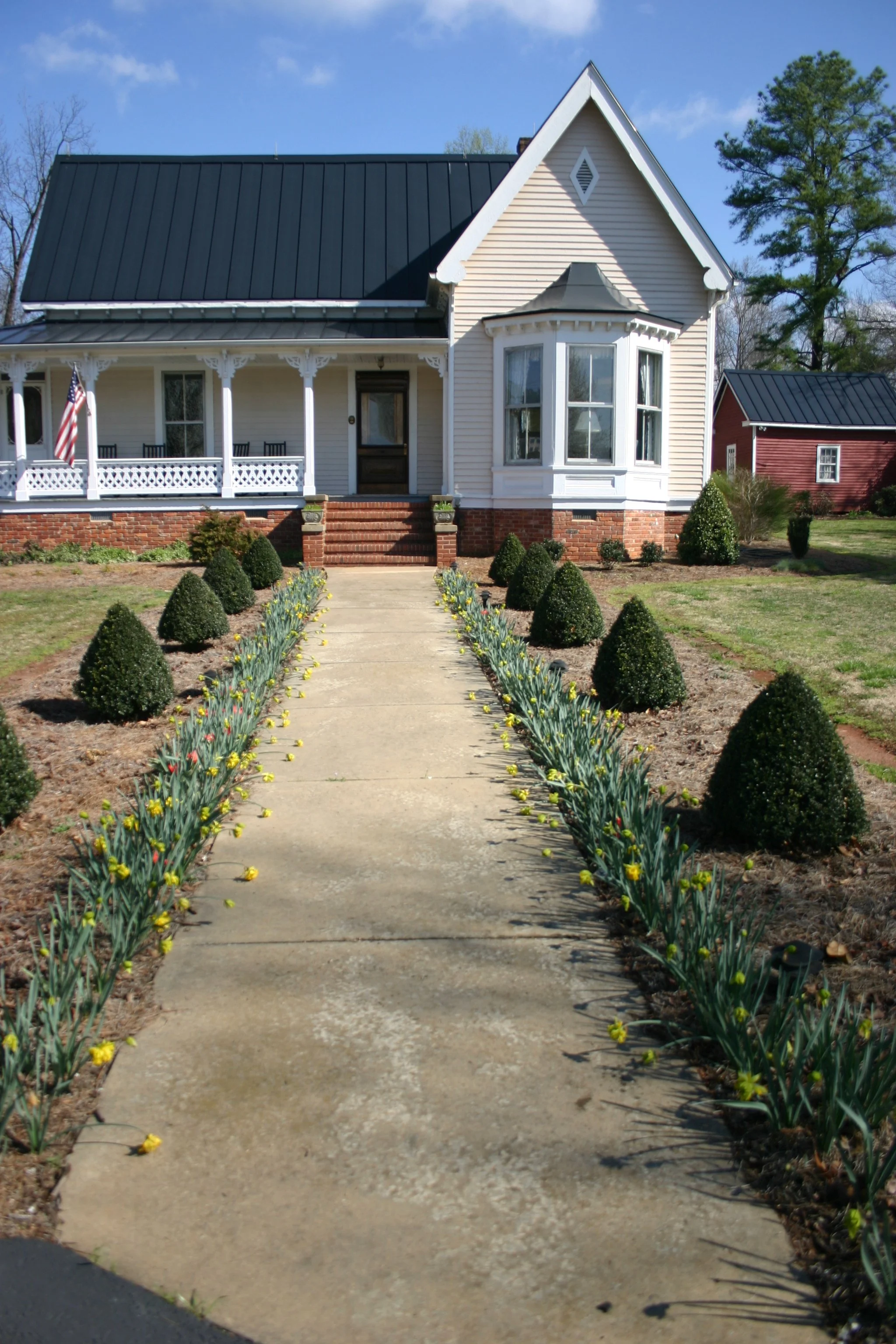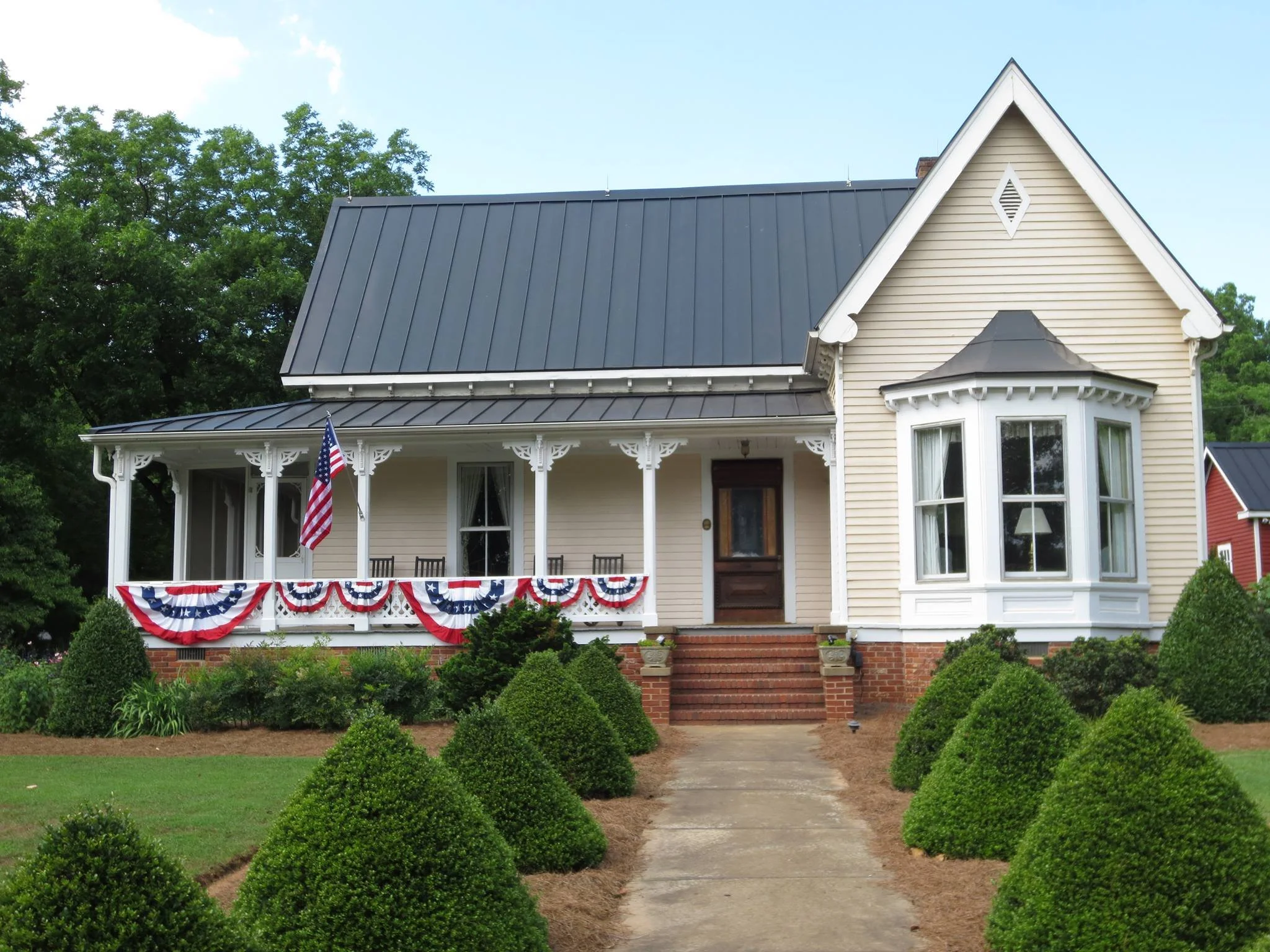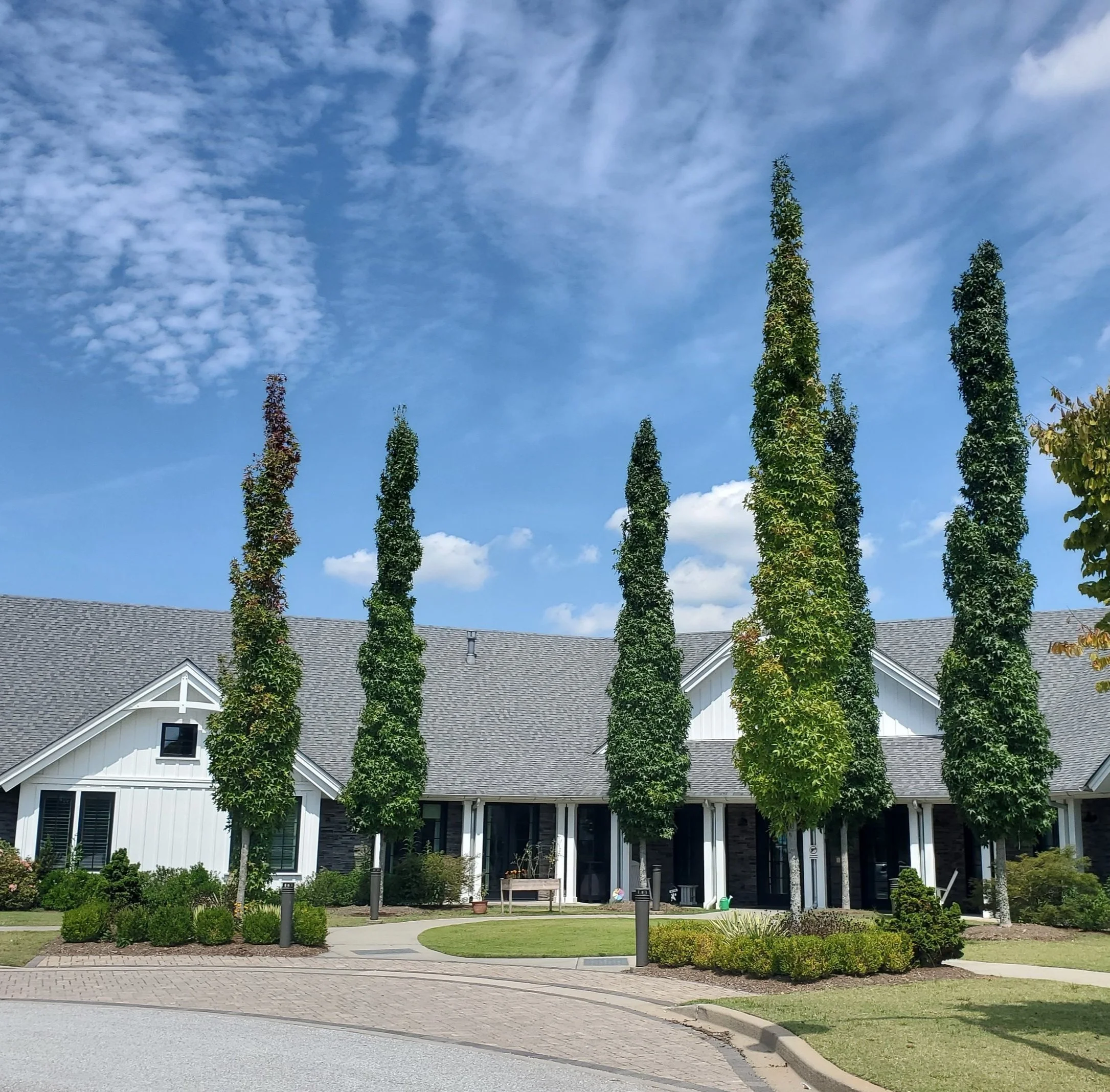I love the look of an allée – a row of the same kind of trees on both sides of a straight driveway, walkway, or pathway. The trees function like a living wall, forcing one’s attention on the termination point: a fountain, a sculpture, a home’s main entrance. There are some famous examples of an allée (pronounced ah-LAY): Longwood Gardens in Pennsylvania, Hyde Park in London, Oak Alley Plantation in Louisiana, Hidcote Manor in Gloucestershire, Dallas Arboretum in Texas. These allées have been structured from a variety of trees: oak, elm, honey locust, olive, birch, linden, yew, dawn redwoods, hornbeams, laburnum, and others but each allée consists of only one tree choice rather than a mixture. Some of these have been pruned and trained to meet overhead, creating a solid tunnel. Very impressive, and very labor intensive.
One thing you may notice on the above plant list. These are large trees, requiring plenty of space. Many private homes have allées on a less grand scale. Years ago, I decided to create an allée along my front walkway. Space was limited, so I chose Compacta Holly (Ilex crenata ‘Compacta’) instead of a tree because I liked the dense, dark green leaves. From experience, I knew that hollies could be pruned into tight shapes and I thought they would be more forgiving than boxwoods. The label indicated a mature size of six feet tall and six feet wide. This seemed ideal. Because I am thrifty (read: cheap), I started with one-gallon shrubs, seven plants on either side of the walk. I measured carefully to space them precisely.
Not much happened during the first year, 2007. I watered, fertilized, and encouraged the newbies to perform. By year two, I was able to begin limited pruning, using hand clippers to remove only a tiny bit of the terminal growth to encourage branching. In that second year, I stepped up the watering and the fertilizing. The shrubs responded beautifully, and by year three I was pruning/shaping every six weeks, training them to tight conical shapes that my husband dubbed The Gumdrops. Because plants have a mind of their own, some were outpacing others. For each pruning session, I ran a temporary string from two wooden stakes on either end of the rows, just above the tops of the shrubs. This guide helped ensure that they would all have a consistent height after each pruning session. By year eight, I moved from the hand pruners to electric hedge shears. I was able to forego the string and depend on visuals. By 2017, each gumdrop had reached a height of forty inches or so. They were dense and exactly the same size.
I was very happy with my junior allée. Then disaster struck. Two of the shrubs died suddenly, for unknown reasons. This left a gap in my lovely planting. There was nothing to do but replace the dead ones. To speed the appearance of a dense shrub, I jammed two small plants into each hole left empty by the unfortunate demise, and started a regular fertilization regimen for the replacements. I pruned all the others severely, hoping that the substitutions would not be so obviously undersized in a year or two. To compound the uneven appearance, I accidentally burned one of the healthy, full-size specimens to a crisp when I used a pressure washer to clean the front walk. Turns out, the exhaust from the gasoline-powered machine was fatally hot. The burned leaves shed, and I was left with a pyramid-shaped pile of charred branches and the need for another replacement. Sadly, when we sold the place, the new owners removed them all.
The gumdrop allée, third year.
The gumdrop allée after ten years.
Why am I sharing this tale of woe? To illustrate that a lengthy planting of any tree or shrub can be interrupted by the foibles of nature. Replacements will always look like replacements. A mixed border may be a better choice than similar plants lined up like soldiers in a parade.
If I choose to replicate the allée again, I have a new tree in mind. Columnar Sweet Gum, Liquidambar styraciflua ‘Slender Silhouette’ grows to fifty feet tall and only six feet wide. It has the same star-shaped leaves as its broader cousins but the narrow width makes it a great choice for narrow lots.
While it does produce a limited number of the maligned sticker balls (seed pods) after a few years, the columnar shape means they fall in a restricted space, allowing for an easy removal. Sweet Gums want full sun and acidic soil. They withstand heat and humidity and are drought tolerant. They are hardy in zones 5-9. Trees grow fast in moist soil, slower in dry soil. They support a wide range of wildlife: birds, pollinators, small mammals. They resist damage from deer or rabbits. Star-shaped leaves turn beautiful colors in autumn – red, yellow, burgundy, or orange.
‘Slender Silhouette’ Sweet Gum is tall and narrow. It performs well in heat and humidity. I consider it a potential alternative to Italian Cypress.


